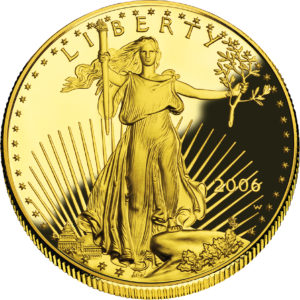Why invest in gold at all?

Gold is the best known hedge against inflation, financial uncertainty and a falling dollar. Since this pretty much sums up the world's environment we’ve been living in for the past decade, it’s easy to see why the value of gold has been on the rise. Of course this is past performance, of course, past performance is no guarantee of future results. The question now is, is gold still a good investment?
I don't have a crystal ball anymore than the next person. However, in 30+ years of being involved in every aspect of the financial industry, I am still convinced to invest in gold in my IRA.
Five major forces are propelling gold and silver prices higher in the 21st century:
1. A Falling U.S. Dollar
- Gold is sometimes referred to as the 'anti-dollar' because it is a perfect hedge against a falling dollar.
- The dollar has fallen 40% since 2001 and 95% since the 1950s. Shocking, yet few Americans understand why.
- Smart investors are moving in droves out of U.S. dollars and into foreign currencies, commodities and gold. Even central banks are divesting themselves of U.S. dollars.
- The U.S. now borrows $2.5 billion a day! Devaluing the dollar is one of the ways the market corrects rising U.S. deficits.
- The world's confidence in America's ability to manage our trillions in debt is fading fast.
2. Rising "Real World" Inflation
- The Federal Reserve and the U.S. Government's Consumer Price Index report inflation at 2-3% a year, yet common sense says real world inflation is likely twice that amount.
- When you factor in monetary inflation (printing money), asset inflation (stocks and housing) and price inflation (cost of living) it's clear that inflation is rising much faster.
- Gold and U.S. rare coins historically have an excellent track record as inflation hedges.
- "Inflation is the one form of taxation that can be imposed without legislation," said economist Milton Friedman.
3. Growing Commodity Demand
- A secular bull market in gold, silver and commodities began in 2001, which has driven oil prices up from $25 a barrel to over $80 and pushed gold prices up fourfold.
- According to industry experts, a typical "secular" (or long-term) bull market runs 18 to 23 years. Using 2001 as a starting date, this trend should continue until 2019-2024.
- During the last major bull market, U.S. rare coins outperformed bullion dramatically, but price increases often lagged behind bullion price movements.
- "The commodities 'supercycle' isn't over and prices may rise because of production shortages next year," says Morgan Stanley, the world's largest securities firm.
4. Rising Geopolitical Uncertainty
- Since September 11, 2001 the world has increasingly become an ideological, political and economic battlefield. The threat of a terrorist attack is present every day.
- "Iran, Iraq, Palestine, Afghanistan and Syria are volatile and potentially explosive... any trigger event could send both gold and oil prices soaring," say the Aden Sisters.
- Owning portable, liquid and universally accepted wealth is highly sought after in a crisis. Gold and rare coins offer the safest of havens during global uncertainties.
- Institutional and individual investors are now seeking a perfect hedge of protection, liquidity and growth potential, along with privacy of ownership.
5. The Popularity of ETFs (Electronic Traded Funds)
- A gold or silver ETF is a security backed up by allocated gold held in a vault on behalf of investors and are sold at all major brokerages.
- Gold bullion placed in ETFs has been one of the fastest growing niches in the gold rush despite growing concerns over fund transparency.
- ETFs have siphoned off some of the new investment money coming into the market, presenting an excellent buying opportunity for U.S.gold coins.
- ETFs are not a replacement for holding physical gold or coins in a well diversified portfolio.
More Questions?
Call (877) 703-2193. We will answer any questions you may have.
